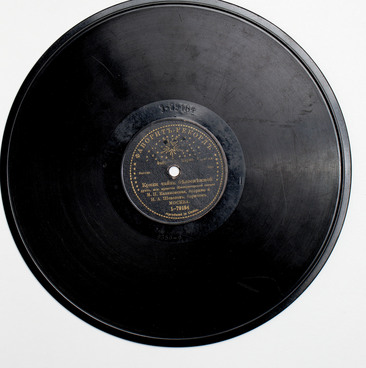The gramophone is the first device for playing vinyl records. It consists of a box made of ash wood, with a mechanism for steadily rotating the turntable, on top of which lies the record. The pickup converts the mechanical vibrations of the needle into sound waves, and the horn amplifies their volume.
The table-top gramophone from the museum’s collection was made in Germany in the early 20th century and preserved in its original configuration. It includes an “Exhibition” membrane, a spring motor and a knob on the side panel for controlling the speed of rotation.
Invented by Thomas Edison in 1877, the phonograph is considered to be the predecessor of the gramophone. This was a revolution in the history of sound recording, as it was previously deemed impossible to preserve and reproduce sound. Edison envisioned his phonograph as the first audiobook for blind people, as well as a replacement for stenographers and an alarm clock.
The gramophone was created on the basis of the phonograph. What’s interesting, this device for listening to music literally translates from Greek as “voice writing”. In 1887, the device was introduced to the public and patented by the American inventor of German origin Emil Berliner. The record became the first ever medium for storing sound and marked the starting point of the history of popular music culture.
With the release of the ten-song record by the Italian tenor Enrico Caruso in 1902, the gramophone became extremely popular. It was a great success for both the singer and the musical device. Emil Berliner continued to influence the emerging music industry: he came up with the idea to pay singers and musicians who recorded their music.
The gramophone quickly gained mass recognition. There was a model of gramophone to satisfy any taste and price point — from inexpensive and affordable to exclusive luxury devices made of mahogany and pure silver. In the early 20th century, a custom gramophone could set one back several thousand rubles — for comparison, a cow cost about fifty rubles. Later, gramophones and pathephones were replaced by electrophones that were powered by electricity and had an improved acoustic system.




